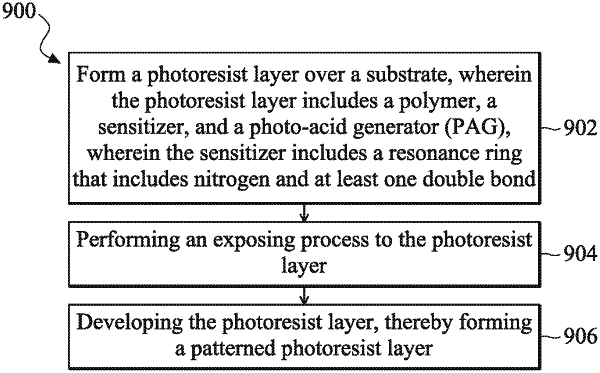| CPC G03F 7/0397 (2013.01) [C07D 247/02 (2013.01); G03F 7/0045 (2013.01); G03F 7/0046 (2013.01); G03F 7/0392 (2013.01); C07D 273/00 (2013.01); G03F 7/0042 (2013.01)] | 20 Claims |

|
1. A method, comprising:
forming a photoresist layer over a substrate, wherein the photoresist layer includes a polymer responsive to an acid, a photo-acid generator (PAG), and a sensitizer bonded to the polymer, wherein the sensitizer includes an imidazole ring and a hydroxy, wherein the hydroxy is attached to a carbon atom in the imidazole ring, wherein the carbon atom is directly bonded to a nitrogen atom in the imidazole ring, wherein the PAG includes a sulfonium cation or an iodonium cation, wherein the PAG further includes a heterocyclic ring directly bonded to the sulfonium cation or the iodonium cation, and wherein the heterocyclic ring includes one nitrogen atom and less than six carbon atoms;
performing an exposing process to the photoresist layer; and
developing the photoresist layer, thereby forming a patterned photoresist layer.
|